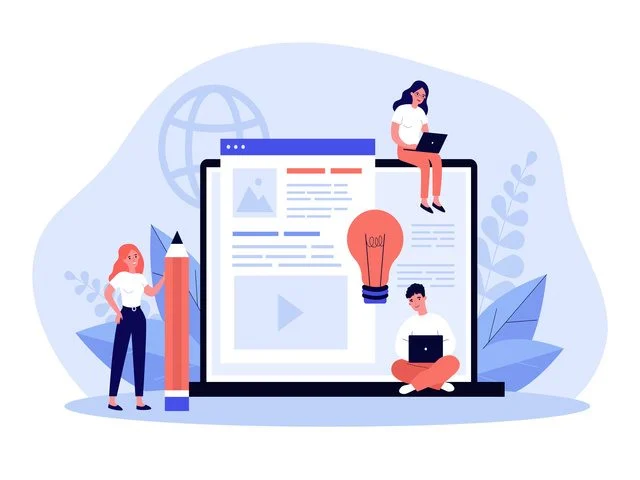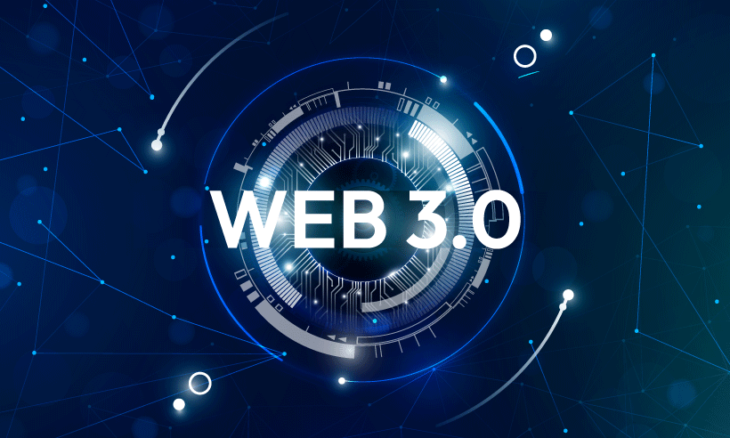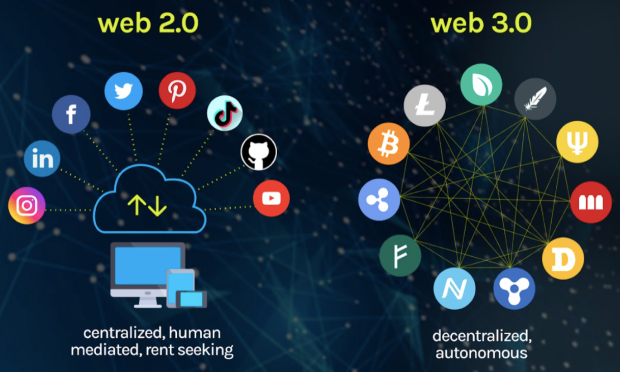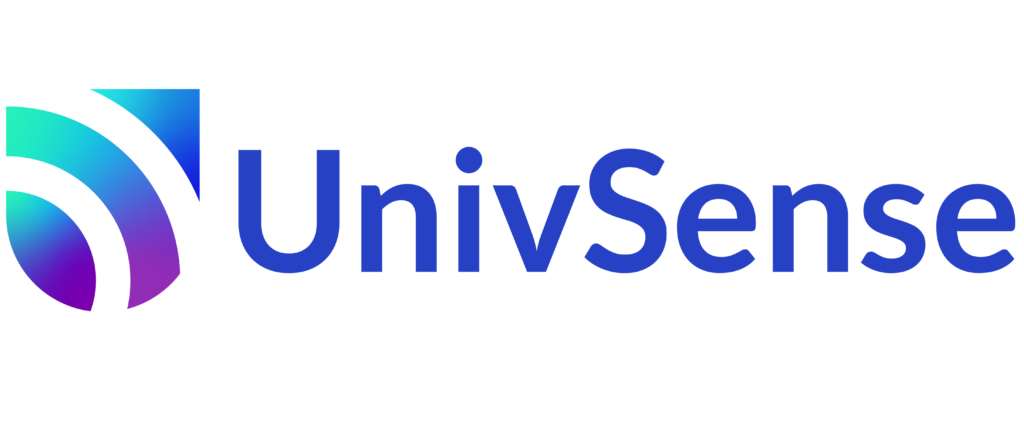The focus of marketing in the present day is on providing customers with individualized experiences. The world’s limitless potential is something you cannot afford to lose out on
So, how precisely can digital marketers leverage this opportunity to improve their marketing strategies? How does the web 3.0 marketing approach affect businesses and brands? To do that, you must first thoroughly understand web 3.0 technologies.
What is Web 3.0 Technology?
The third generation of the progression of web development is referred to as Web 3.0. The new era of the Internet incorporates ideas like decentralization, blockchains, and NFTs.
The ability to customize user interactions is what makes web 3.90 so extraordinary. The algorithms can converse like people and provide potential customers with personalized user experiences.
It’s transforming how we view the Internet, not just evolving it. Web 3.0 marketing encompasses more than just sites and SEO.
A Web 3.0 environment enhances the user experience by offering more robust and interactive advertising alternatives. Because of this, marketers can now reach more specific people with their commercials.
Advertisers can advertise their goods and offer a more effective strategy with Web 3.
Why?
They would’ve had access to a wide range of information sources, which would influence their choice of purchases.

Image Source: https://www.cmswire.com/
Important Elements of Web 3.0 Marketing
Awareness Stage
The semantic web will improve communication between machines and people. The SW will employ metadata to define the material in a machine-readable way. Web3 is explained more in-depth in this guide. Stay tuned for all the details!
Machine intelligence (AI)
With Natural Language Processing (NLP) technology enabling computers to comprehend, interpret, and manipulate human language, Web 3.0 will enable computers to function more like people by understanding the data presented and responding with accuracy and speed.
3D
Future generations will be increasingly drawn to three-dimensional design because it can facilitate understanding more effectively than two dimensions. Additionally, as Web 3.0 matures, more and more applications—like those for virtual reality (VR), augmented reality (AR), and 3D product visualization—use three-dimensional design.
Ubiquitous
Web 3.0 is accessible to everyone on all devices and through all applications. The Internet of Things (IoT), which powers the omnipresent web, is responsible for the daily increase in internet-connected devices.

Image Source: https://s3-ap-southeast-2.amazonaws.com
Decentralisation: What Is It?
Web 3.0’s key concept is decentralization. After understanding what web3 is, let us take you through the concept of decentralization.
Decentralization: what is it exactly?
In Web 2.0, computers identify and locate information stored on servers—typically a single server—at a specified place using the HTTP protocol. The information would be stored in multiple places at once in Web 3.0 as opposed to just one. As a result, there wouldn’t be a facility for data storage.
Advantages of Web 3.0 marketing
Web 3.0 will improve the web’s intelligence, security, and transparency, enabling more effective machine-human interaction and more efficient browsing.
The top benefits of the semantic web are listed below.
Create a single profile
Users no longer need to build unique personal profiles for various platforms with web 3.0. Any platform can use a single profile, and the user retains full ownership of all provided information.
The top benefits of the semantic web are listed below.
Transparency
End users will monitor their data and examine the site’s code regardless of whatever blockchain platform they choose.
Nonprofits create most blockchain systems. Therefore, they provide a free blockchain platform that supports transparent development and design processes. Thanks to this, users will no longer be dependent on the company creating the platform.
Data Access with Open Source
The information will be available on any device and from any location. The goal of enabling cellphones and other smart devices to access computer data when synchronized is to improve data collection and users’ access to it worldwide.
Web 3.0 will further broaden the scope of engagement, including secure data transfers, richer information flows, and frictionless payments. It will occur as a result of web3, allowing us to communicate directly with just about any machine without using intermediaries who charge fees.

Image Source: https://blog.milliondollartokenpage.com/
Blockchain and Web 3.0
It can be challenging to distinguish between blockchain and web 3.0 because they are frequently conflated. In layman’s words, blockchain is one of the technologies driving web 3.0, IoT, and AI.
More specifically, because it reinvents the data structures in the semantic web’s backend, blockchain is the basis of web3. Ethereum blockchain is another name for blockchain.
It is an intelligent contract deployment decentralized state machine. These smart contracts specify how a web 3.0 application should function. Anyone who wants to create a blockchain application must therefore install their application code on the shared state machine.
Do you know the pros of decentralized advertising?
- No possibility of server failure: Due to the absence of centralized servers, many centralized web services, including Google Docs and Facebook, would not be at risk of server failure. By enabling people to own their personal information rather than having businesses hold it and sell it to marketers, decentralization also facilitates the realization of fundamental privacy rights.
- Absence of outside authorization: Users might examine their data without requiring outside authorization. Since users wouldn’t have to divulge their personal information to outside parties, this would boost their security and privacy.
- Lack of Data Theft: In Web 2.0, data leakage was a thing, and if you stored your information in the cloud, you were almost certain to become a victim at some point. Our digital lives are becoming increasingly centralized, which makes us more open to those looking to use our data for their ends.
- Once you are done with creating such content, get your team to engage in content distribution. Accommodate them into different distribution channels to maximize your reach.
Social media and Web 3.0
Since its debut, social media has become a phenomenon that is only getting bigger. Regarding user popularity, YouTube and Facebook are at the top of the list.
They have transformed online communication and added numerous new tools to enhance user experience. Exciting advances to social media marketing are brought about by Web 3.0. Due to Web 3.0’s decentralized nature, for instance, there would be decentralized apps known as dApps, and people would take control of their data instead of a centralized authority.
Web 3.0 social media can help businesses in developing alliances that are mutually beneficial and meaningful interactions with their customers. It’s time for enterprises to stop viewing clients as data points in databases and start viewing them as individuals with similar needs.
Web 3.0 Examples
Here are a few prevalent web 3.0 applications to illustrate the adoption’s reach:
Advantages of Web 3.0 marketing
Siri exemplifies a significant element of web 3.0, speech recognition software. With the aid of this technology, personal assistants like Siri can converse, share knowledge (through linked blocks), and give users more accurate search results for every important question, such as how to, why to, and what. By employing pre-programmed algorithms, Siri could previously only complete straightforward tasks, like notifications and directions to the nearest grocery shop.
Storj
One of the main components of web3 is decentralized storage, and Storj effectively uses this component. One of the first and most well-known decentralized storage systems, it works with blockchain technology to let users rent out their spare disc space.
One of the main components of web3 is decentralized storage, and Storj effectively uses this component. One of the first and most well-known decentralized storage systems, it works with blockchain technology to let users rent out their spare disc space.
How To Get Ready For Web 3.0 Marketing With Your Brand
A revolution in marketing is coming.
We can already see the initiatives and symptoms of it. Keeping in mind that Facebook changed its brand name to Meta and is funding the Metaverse. Recently, Square’s name was changed to Block to emphasize cryptocurrency.
Web 3.0 is the next stage in the development of the Internet, connecting people and website content through intuitive user interface design and communication channels. As technology keeps evolving, there will be a lot of changes in the web3 community.
How will the Web 3.0 wave impact your company?
Due to their decentralized organizational structure, businesses would be very user-centric and transparent. The ability for users to regulate their privacy and information would be available.
Blockchain technologies would need to be modified by business owners to provide open access and data transparency.
Last Words on Web 3.0
An Internet where users can fully control their information and security while allowing businesses to access it is on the horizon (or not). Blockchain will power all of this.
Web 3.0 will thereby hasten the ethical and open use of user information, from tailored search engine results to cross-platform design tools and the application of 3D graphics. The Internet will grow more interactive and immersive.
If you are interested in Web 3.0 marketing, UnivSense can help you get started. Do not forget to get in touch with our professionals today!
